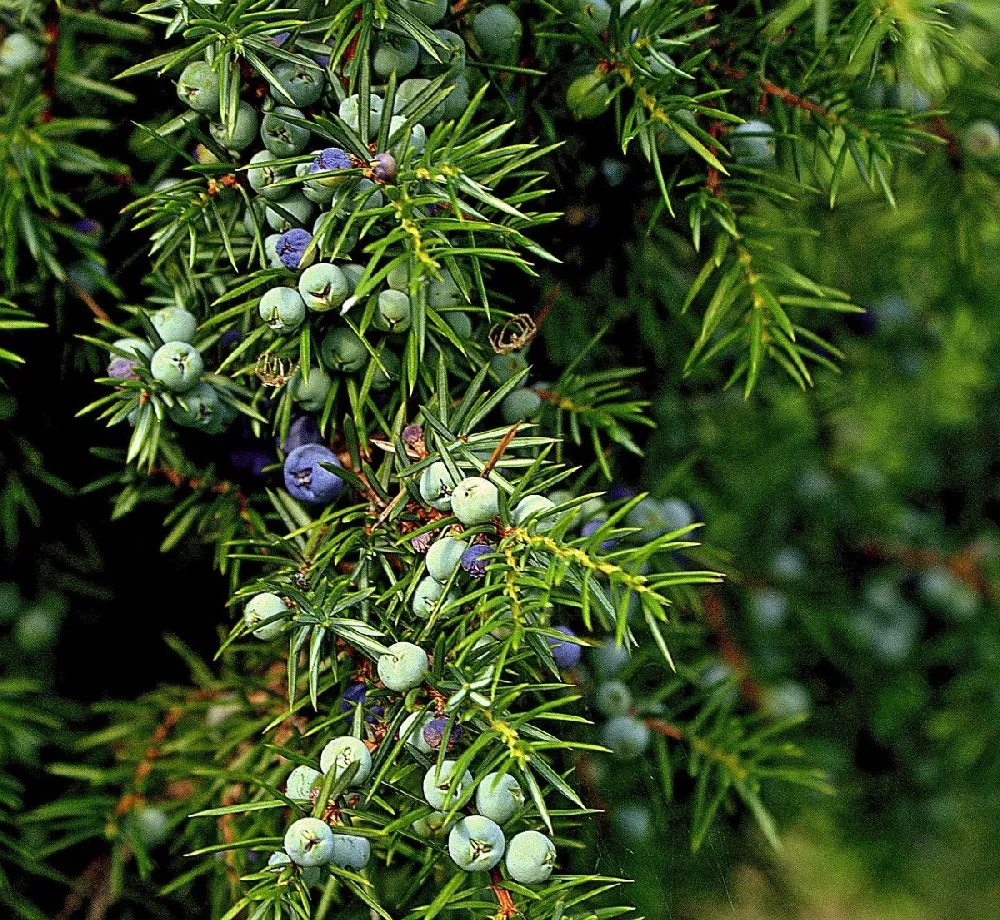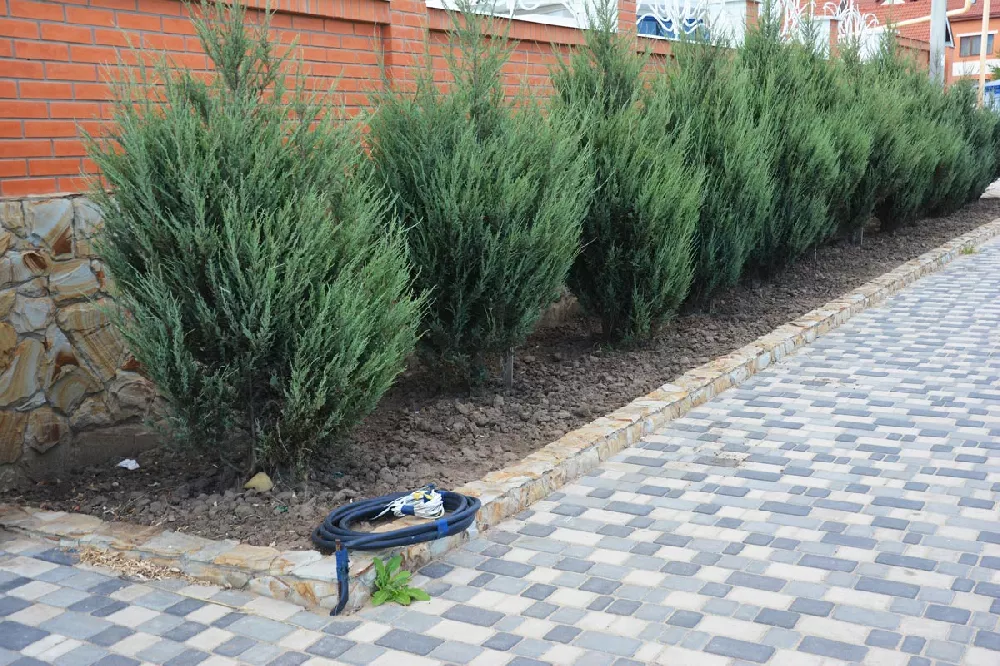- Home >
- Ornamental Trees >
- Blue Star Juniper Tree
Blue Star Juniper Tree for Sale - Buying & Growing Guide
The Blue Star Juniper Tree, Juniperus squamata 'Blue Star,' works color magic in the garden. With its icy silver-blue foliage, it provides texture and contrast against other green foliage plantings and is a great way to add a vertical accent to your garden or landscape. Also available in shrub form, it is a versatile small tree that grows easily in poor or average soils. It's a perfect specimen plant for a mixed perennial garden and is an elegant addition to any foundation bed. The Blue Star needs little extra care and can be pruned or left to grow on its own as you wish. It grows throughout much of the continental U.S., and adapts easily to container growing, making it a good choice for patio or pool-side plantings. Here are a few more reasons to add this attractive small tree to your landscape:
- Can be pruned into a topiary form if desired for formal gardens.
- Winner of the prestigious Award of Garden Merit from the Royal Horticultural Society.
- Excellent choice for rock gardens.
Enter your zip code to find nearby stores that may carry this plant.
Plant Care
Sunlight

Grow the Blue Star Juniper in a location where it will get full sun — at least six hours of direct sunlight a day.
Watering
Water several times a week during the first year, after that, water when the soil is dry two inches below the surface.
Fertilizing

Fertilize in early spring with a slow-release product formulated for evergreens.
Planting and Care
Planting instructions
Site your tree in soil that drains well and receives at least six hours of direct sunlight each day. Unpot the sapling and tease out any encircling roots, which can girdle the tree and slowly kill it. Dig a hole that’s as deep as the root ball and twice as wide. Place the tree in it, spreading out the roots. Holding it upright and steady, fill in around the roots with topsoil, tamping down as you go to eliminate air pockets. Water thoroughly. Apply a two to three-inch layer of organic compost such as bark chips around the root zone to conserve moisture and hinder weed growth but keep it from touching the trunk to avoid problems with rot.
Watering and nutrients
During its first growing season, water your Blue Star Juniper every few days to help it establish a strong and extensive root system. After that, water whenever the soil is dry two inches below the surface—approximately once a week unless you receive rain. Fertilize in spring with a slow-release product designed for evergreen trees and shrubs, such as a 16-4-8 formula.
Pollination
Junipers are dioecious, meaning that male and female reproductive organs — cones rather than flowers — are on separate trees. Male cones produce pollen that is transferred to female cones through the action of the wind.
Pruning
Monitor your tree for any dead, diseased or damaged limbs and prune these out whenever you see them. Other than that, there is no required pruning that the tree needs. If you wish to shape it, however, you can prune it in early spring before new growth appears. These trees take well to pruning and can be trimmed into more formal shapes if desired.
Pests and diseases
The Blue Star Juniper is not prone to any disease or pests, and a healthy tree can generally fend off minor challenges on its own. Common insects that may appear on your tree include aphids, bagworms, scale insects and spider mites. If the infestation is severe, consider releasing beneficial insects such as ladybugs and lacewings, which will attack the pests and help eliminate them. Junipers occasionally show signs of twig or tip blight, which is actually due to several fungal diseases that cause the foliage to turn brown and die off. This is more common during hot, wet weather. Fungicides are available to handle these diseases. It is also helpful when watering to direct your hose to the roots, rather than the leaves.
Achieving maximum results
Planting your Blue Star Juniper in a container is one way to achieve maximum results with this cultivar. To do so successfully, choose a container that is about twice the size of the root ball, with large drainage holes in the bottom. Use a good-quality potting mix and plant according to our directions above. Note that a container-grown plant may need more regular watering and feeding than one that’s grown in the ground. If you live farther north than this juniper’s range, growing it in a pot is one way to enjoy it without worrying about cold temperatures. Just bring it inside when your weather or windchill is predicted to be below -20 degrees Fahrenheit and keep it in a cool garage or basement, watering occasionally.
FAQs
Where can I grow a Blue Star Juniper Tree?
This sturdy cultivar is hardy down to -20 degrees Fahrenheit, but it can also handle some heat. It can be grown in USDA hardiness zones four through eight, which includes most of the continental U.S., as far north as coastal Maine and as far south as northern Florida.
How big does the Blue Star Juniper get?
The Blue Star Juniper has a mature height of about three feet, with a mature width of three to four feet. It can be pruned back to a shorter height and width if desired and can also be grown as a shrub, in which case it acts as an attractive groundcover and foil for other low-growing perennials and shrubs.
How is this juniper best used in the landscape?
If you are planting it in the ground, consider using it as part of a mixed perennial or shrub bed, where its blue foliage will contrast nicely either with deep green conifers or with flowering plants. It would fit in well in a rock garden or Asian-themed garden. If planted in a container, consider using two to flank a front doorway, either pruned to an attractive sphere or left unpruned. Potted junipers will also work well as part of a container grouping on a deck or patio or around a pool.
Compare Similar Products
You can't add more Product Name - Product size to the cart.
OK







